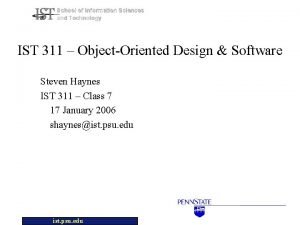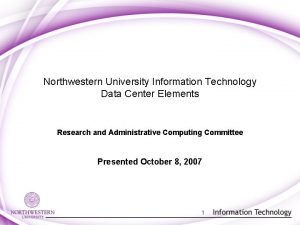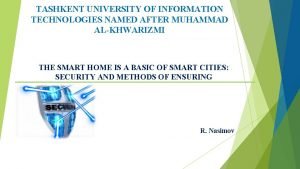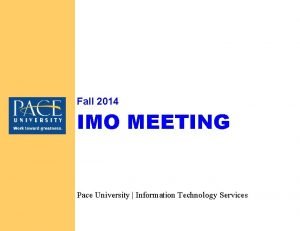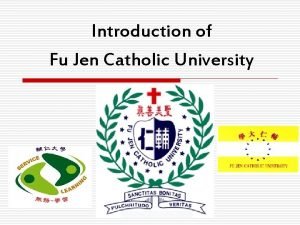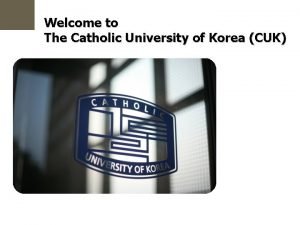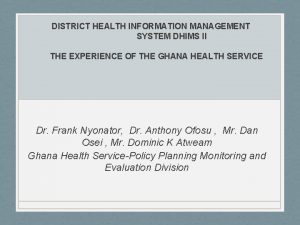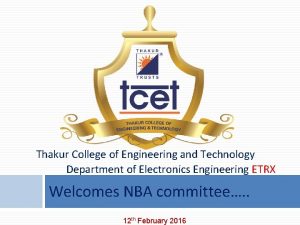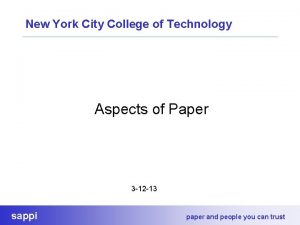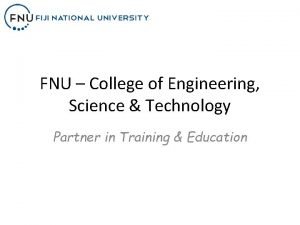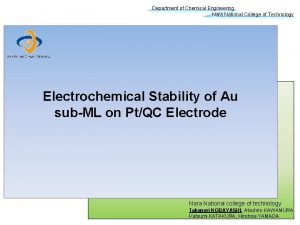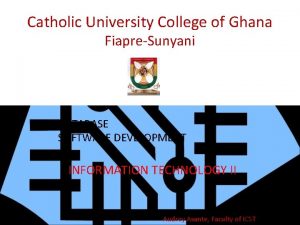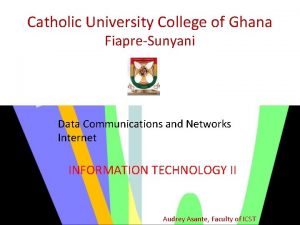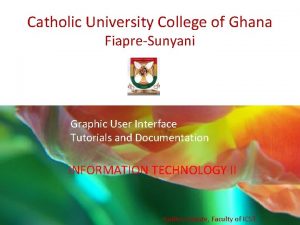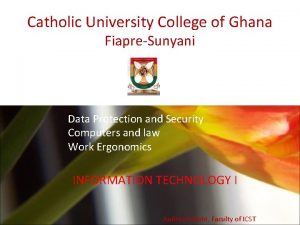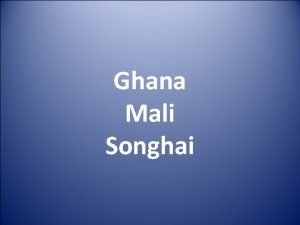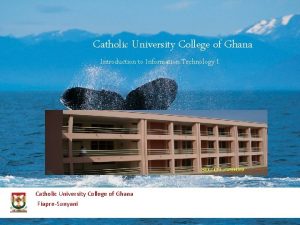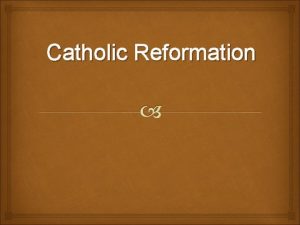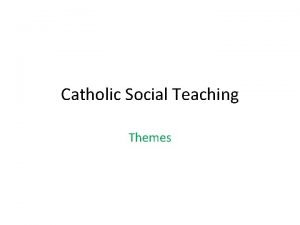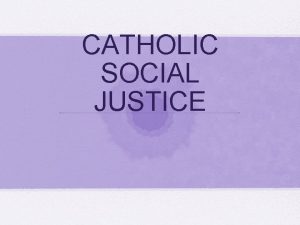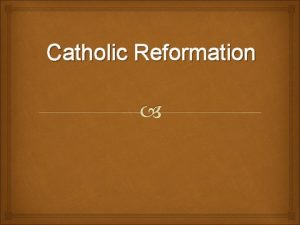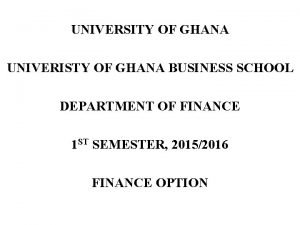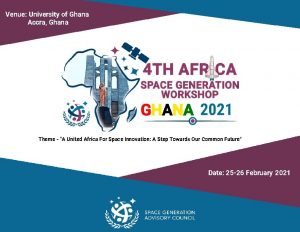Catholic University College of Ghana FiapreSunyani INFORMATION TECHNOLOGY













- Slides: 13

Catholic University College of Ghana Fiapre-Sunyani INFORMATION TECHNOLOGY I Audrey Asante, Faculty of ICST

INFORMATION TECHNOLOGY • Information Technology is technology that merges computing with high-speed communications links carrying data, sound and video. • Technological convergence is also known as digital convergence. It is the technological merger of several industries through various devices that exchange information in the electronic, or digital, format used by computers. The industries are computers, communications, consumer electronics, entertainment, and mass media.

INFORMATION TECHNOLOGY • Convergence of technology means whereby people could watch television on their computers. People can also browse on their phones. • Technological convergence is derived from a combination of two recent technologies, computer and communications.

INFORMATION TECHNOLOGY • Computer technology: a computer is a programmable, multiuse machine that accepts data (raw facts and figures) and processes, or manipulates, it into information we can use. Its purpose is to speed up problem solving and increase productivity. • Communications technology: communications or telecommunications, technology consists of electromagnetic devices and systems for communicating over long distances.

COMPUTER AND COMMUNICATIONS SYTEM ELEMENTS • People – Computer professionals: users with extensive education in the technical aspects of using a computer and communications system. – End users: users with moderate technical knowledge of information technology. • Procedures are descriptions of how things are done-steps for accomplishing a result or rules and guidelines for what is acceptable.

DATA/INFORMATION • Data consists of the raw facts and figures that are processed into information • Information is summarized data or otherwise manipulated data that is useful for decision making. • Units of measurement – – – Bits Byte Kilobyte Megabyte Gigabyte Terabyte

ANALOG AND DIGITAL • Digital data consists of data represented by on/off signals. This is the method of data representation by which computers process ad store data and communicate with each other. Digital specifically refers to communications signals or information represented in a two-state (binary) way. • Analog data is transmitted in a continuous form that closely resembles the information it represents.

THE BASIC OPERATIONS OF COMPUTING • • Input operation Processing operation Output operation Secondary-storage operation • Peripheral devices are pieces of hardware that are connected to a computer

HARDWARE CATEGORIES • Input • Processing and memory • Output – Three principal types of output hardware. They are screens, printers, and sound output devices. • Secondary storage • Communications

THREE DIRECTIONS OF COMPUTER DEVELOPMENT • Smaller size • More power • Less expense

Five types of computers • • • Microcontrollers Microcomputers Minicomputers Mainframes Supercomputers • Workstations are sophisticated desktop microcomputers used for technical purposes. Any of these four computers may be used as a server.

SOFTWARE • It consist of instructions that tell the computer how to perform a task • Two major types are application software and system software • Application software may be either custom or packaged (off the shelf program developed for sale to the general public)

APPLICATION SOFTWARE • Application software is software that has been developed to perform a specific task.
 詹景裕
詹景裕 Ist 311
Ist 311 Northwestern mailroom
Northwestern mailroom Tashkent university of information technology
Tashkent university of information technology Pace university information technology
Pace university information technology St michael's catholic college sixth form
St michael's catholic college sixth form Catholic university
Catholic university Catholic university sunyani
Catholic university sunyani Catholic university of korea songsin campus
Catholic university of korea songsin campus Dhmsi
Dhmsi Thakur college of engineering and technology
Thakur college of engineering and technology How many colors do you see
How many colors do you see College of engineering science and technology
College of engineering science and technology Nara images
Nara images

